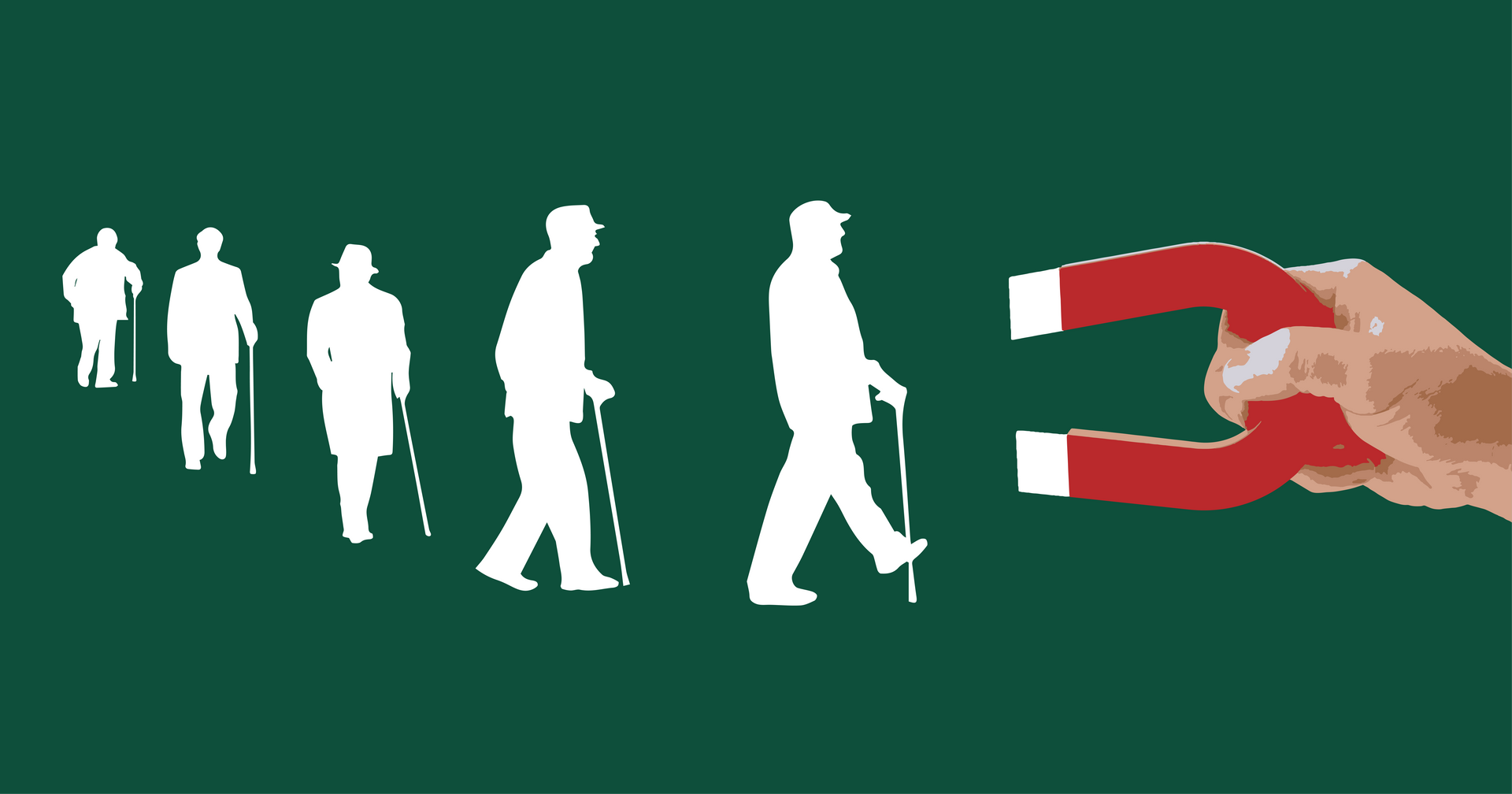Seniors and Independent Living: The What, Why, and How

Age is just a number, and with it comes the opportunity to redefine your life on your terms. The journey of aging isn't about losing independence; it's about discovering a world of new possibilities and charting your course toward a fulfilling and self-reliant senior life.
The What
What is independent living for seniors?
Independent living is a lifestyle choice that offers seniors the opportunity to age gracefully in an environment specifically tailored to their needs. It's a way of life that prioritizes personal freedom, where seniors can pursue their passions, interests, and hobbies without being weighed down by the hassles of traditional homeownership.
Most independent living communities are designed to feel and function like private residences, providing a sense of familiarity and comfort. In fact, it's your home, personalized with your belongings, but without the stress that often comes with managing a larger property. You get to enjoy the privacy and independence of your living space, making it a genuine home away from home.
What sets these communities apart is the social aspect. They're not just housing; they're vibrant, active communities where you can connect with peers who share your interests. The opportunities for social engagement are endless. From fitness classes and social gatherings to exciting excursions, you have a world of activities at your fingertips. It's a chance to form meaningful connections, build lasting friendships, and lead a fulfilling life in the company of like-minded individuals.
What types of independent living communities are there?
A diverse range of senior independent living facilities and retirement homes cater to the unique needs and preferences of older adults. These options encompass a spectrum of housing styles, services, and affordability. Let's explore the different types:
Low-Income or Subsidized Senior Housing
In the United States, affordable senior housing is often subsidized by the U.S. Department of Housing and Urban Development (HUD). Designed to accommodate low-income seniors, these housing complexes offer cost-effective living arrangements with essential amenities and services.
Senior Apartments or Congregate Care Housing
These apartment complexes are typically age-restricted, with residents often being 55 or 62 years and older. Rent in senior apartments may include access to community services like recreational programs, transportation services, and communal dining facilities, promoting a social and active lifestyle.
Retirement Homes/Retirement Communities
Retirement communities feature a variety of housing units reserved for individuals above a certain age, commonly 55 or 62. Housing options within retirement communities can range from single-family homes and duplexes to mobile homes, townhouses, and condominiums. If you choose to purchase a unit, you may have additional monthly fees covering services such as exterior maintenance, recreation centers, and clubhouses.
Continuing Care Retirement Communities (CCRCs)
CCRCs are an excellent choice for seniors who are currently in good health but anticipate potential health challenges in the future. These facilities provide a full spectrum of care, from independent living to nursing home care, all within the same community.
The primary advantage of CCRCs is the seamless transition from one level of care to another, allowing residents to stay in a familiar environment as their needs change. It's a one-time relocation that supports independence for as long as possible.
What are the benefits of independent living for seniors?
If you are considering independent living for yourself or a loved one, be sure to do your research and find a community that is a good fit for your needs and interests. The following benefits seniors can enjoy while living in independent houses:
Freedom and independence
Independent living communities allow seniors to live their lives on their own terms. They can choose when to wake up, when to go to bed, and what activities they want to participate in.
Socialization and companionship
Independent living communities provide opportunities for seniors to socialize and make new friends. Many communities offer a variety of social activities, such as clubs, classes, and events.
Access to amenities and services
Independent living communities typically offer a variety of amenities and services, such as meals, transportation, and housekeeping. This can free up seniors' time so they can focus on the things they enjoy.
Security and peace of mind
Independent living communities often have security features in place, such as gated entrances and security cameras. This can give seniors peace of mind, knowing that they are safe and secure.
The Why
Why are seniors choosing independent living?
Many seniors initially hesitate to leave their current homes, fearing a loss of independence or believing they might not be ready for such a transition. However, the benefits of independent living communities are numerous and often outweigh any initial concerns.
Empowerment: The Choice of Independent Living
Independent living is an excellent fit for seniors who do not require extensive assistance with health or self-care tasks. These communities offer a wealth of amenities and activities, empowering residents to make choices that suit their individual needs. Seniors can enjoy privacy when they desire it while also having ample opportunities to engage in social interactions. The sense of empowerment and the knowledge that assistance is readily available provide residents with the confidence to pursue activities they love without concerns about being alone at home.
Fulfilling Retirement
Seniors often find themselves less active when they stay at home. Worries about injuries or physical limitations may discourage certain activities. Accessing activities can also involve the hassle of driving to different locations. Independent living communities address this issue by providing daily opportunities for physical activity within the community itself. According to the CDC, regular physical activity offers multiple benefits for senior adults, such as maintaining strength, reducing the risk of falls, and improving overall mental well-being. It is an essential reason to consider an independent living community, where physical activity is both encouraged and easily accessible.
Senior Independence: The Appeal of Independent Living Communities
Retirement should be a time to enjoy life to the fullest. Decades of managing daily tasks, from chores to cooking, can become a burden. Independent living communities alleviate these concerns by offering services like weekly housekeeping and access to three meals a day, seven days a week. Seniors no longer need to worry about home maintenance tasks like yard care or repairs. Moreover, these communities are designed to provide safety and security, reducing the need for costly home modifications. Choosing an independent living community maximizes the value for your money by consolidating various costs into a single monthly fee, sparing seniors from juggling multiple bills and expenditures.
Active Aging: How Independent Living Meets Seniors' Needs
One of the most compelling reasons to opt for an independent living community is the social aspect. These communities offer social environment, often with activities planned for residents. Unlike remaining at home, where social opportunities may be limited, senior living residents can enjoy the company of others who share a similar stage of life. This social interaction not only enriches their lives but may also contribute to improved family relationships. Seniors can spend quality time with their loved ones without the added burden of caregiving, as many independent living communities provide support and care services as needed.
The How
How to create a senior-friendly environment?
It is quite a bit of a challenge to fulfill all the desired needs of seniors, so the following are some suggestions that can be fruitful:
Recognizing the Hurdles
Seniors encounter a range of difficulties when contemplating aging in their own homes. One significant challenge is the potential decline in physical mobility, which can significantly impede their ability to move around comfortably. Simple, everyday tasks like cooking, cleaning, and bathing can become physically demanding. Furthermore, issues related to poor vision and hearing can further exacerbate these challenges. In addition to physical limitations, seniors may grapple with isolation and a lack of mental stimulation, which can contribute to cognitive decline and even depression.
Mobility problems
Improving home mobility for seniors is essential for creating a comfortable and independent living environment. Modifications should prioritize ease of movement and accident prevention.
Some examples of simple and affordable home modifications that can make a big difference for seniors include:
- Installing grab bars in bathrooms and along hallways
- Adding non-slip mats in high-risk areas such as kitchens and bathrooms
- Widening doorways for wheelchair access
- Replacing stairs with ramps
- Installing stairlifts for multilevel living
- Thoughtful placement of commonly used items
Adequate lighting is necessary for creating a safe and comfortable living space. All living areas should be well-lit with clear and bright lighting. In addition to overhead lighting, consider adding nightlights and table lamps that are easily accessible for older adults. Place light switches near the room's entrance for convenience and consider installing remote-controlled lighting systems. Well-illuminated living spaces enhance safety and comfort for seniors. For a complete guide to senior-friendly lighting, check out our handy guide here.
How to build relationships with senior residents and their families?
Building relationships with resident’s families is of much importance, this will not only increase the chances of their retainers at your apartment but also the confidence family is going to have on your brand.
- Active listening and empathy: Give your full attention to seniors and their families when interacting with them. Show that you understand and care about their concerns, needs, and emotions.
- Respect and dignity: Treat seniors with the utmost respect and dignity. Address them by their preferred names, maintain their privacy, and encourage their independence as much as possible.
- Open communication: Maintain open and transparent communication with both seniors and their families. Regularly update them on the senior's well-being, care plans, and any changes in their condition.
- Engage in conversations: Initiate and engage in meaningful conversations with seniors. Discuss their interests, hobbies, and life experiences to build a connection. Encourage family members to share stories and memories.
- Individualized care plans: Develop individualized care plans that reflect the unique needs and preferences of each senior. Involve families in the planning process to ensure their input is considered.
- Family involvement: Encourage family members to participate in caregiving activities and visits, as appropriate. This involvement helps seniors feel connected to their loved ones and eases the caregiving burden.
In these communities, the focus is on simplifying life. Residents can trade the burdens of household chores, such as maintenance, landscaping, and managing basic utilities, for the true comforts of home. Imagine a life where you can enjoy your personal space, unencumbered by the never-ending to-do lists that come with owning a house.
Factors to Consider Before Joining
Geographical Variations
Geographical differences significantly impact the availability and diversity of independent living communities for seniors. For instance, urban areas like New York City or Los Angeles boast a plethora of independent living options due to their high population density and senior demographics. These cities offer a wide array of senior communities, ranging from luxurious high-rise apartments with comprehensive amenities to cozier boutique-style residences catering to various preferences and budgets.
Contrastingly, rural areas, such as small towns in Nebraska or remote regions in Montana, may have limited choices when it comes to independent living options for seniors. In these areas, senior housing might be more focused on subsidized housing or smaller-scale facilities with fewer amenities due to lower population density and limited demand.
Moreover, the regulations and standards for senior living facilities can vary from state to state. For instance, states like California or Florida might have more stringent regulations concerning healthcare services integration or amenities offered within independent living communities compared to states with less regulated markets.
Legal and Contractual Aspects
Lease agreements in retirement homes or CCRCs might entail specifics about fees, potential increases, and the process of transitioning between different levels of care within the community. These legal documents might also outline the responsibilities of the community management and residents, including rules, regulations, and dispute resolution procedures.
Residents and their families should thoroughly review these contracts or agreements before committing to ensure they align with their expectations. Seeking legal advice, if necessary, can provide clarity and prevent misunderstandings or surprises later on.
Technology Integration for Seniors
Some communities may offer technology-driven solutions such as health monitoring systems, emergency call buttons, or wearable devices that track vital signs. These technologies aim to ensure residents' safety, provide immediate assistance in case of emergencies, and offer peace of mind to residents and their families.
Moreover, connectivity options like Wi-Fi availability, digital communication tools, or technology-assisted classes might be provided to facilitate staying connected with family and friends, accessing online resources, or engaging in virtual events.
Conclusion
In summary, independent living for seniors provides a fulfilling lifestyle tailored to their needs. The communities offer privacy, socialization, and convenience, empowering seniors to accept their golden years with confidence. It's a celebration of independence, empowerment, and the joy of aging gracefully.




